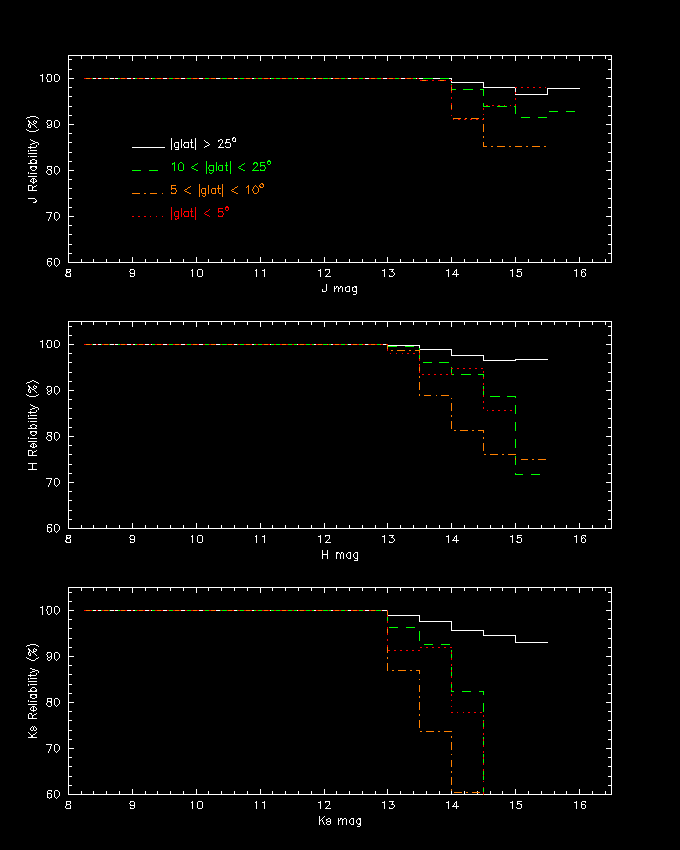XSC Reliability
The Extended Source Catalog is first and foremost a catalog of resolved objects, the bulk of which are galaxies in the local Universe (redshift < 0.3). A very small % are Milky Way stars (point sources), masquerading as resolved, extended objects. The contamination level rises with the confusion noise. The degree of stellar confusion is measured by the density metric.
A. Repeatibility
The point source contamination or reliability of the XSC may be gauged using repeated observations of the ABell 3558 cluster of galaxies (located behind a region of the Milky Way rich in stars). The results are documented in Galaxy Cluster Repeatibility Analysis.
B. Visual Inspection
Approximately 1/3 of the XSC has been visually inspected, with nearly 100% completeness at the bright end: Ks < 12.5 mag. The results of this inspection then represent a measure of the reliability of the catalog, particularly at the bright end since it was uniformly inspected. The results are divided into four samples, each representing a "density" or confusion noise regime:
-
1. low stellar density: |glat| > 25 degrees
2. moderate stellar density: 10 < |glat| 25 deg
3. high stellar density: 5 < |glat| < 10 deg
4. Milky Way Wall: |glat| < 5
B.1. Aggregate Reliability
The "raw" or aggregate reliability is summarized in the figure
to the left.
The bottom line is that the XSC reliablity is better than 98%
for unconfused regions of the sky,
and better than 90% (Ks < 13.0 mag) for regions that include
the Milky Way. The tabular results for the low stellar density
case is given
here, and the reliablity per band per stellar number density is
shown in
this figure.
B.2. Level-1 Science Requirements -- Reliability
The Level-1 Science Requirements set specific completeness and reliability requirements that the XSC is aspiring to. Here the requirements allow the application of the g_score to improve the galaxy reliability (representing most the XSC in any case).
The bottom line is that the XSC galaxy reliablity is better than 99% for unconfused regions of the sky, and better than 90% (Ks < 13.0 mag) for regions that include the Milky Way. The tabular results for the low stellar density case is given here, and the reliablity per band per stellar number density is shown in this figure.
[Last Updated: 2002 Dec 22; by Tom Jarrett]

